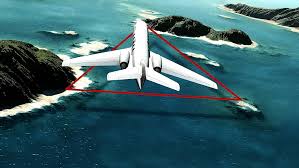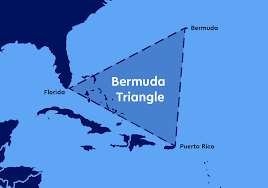Exploring Mid-Ocean Ridges: A Deep Dive into Nature’s Underwater Mountain Chains

The world’s oceans hide some of the most fascinating geological features on Earth, and among the most significant of these is the mid-ocean ridge. Often described as the longest mountain range on the planet, these underwater ridges are vast, stretching for tens of thousands of kilometers beneath the sea. They play a crucial role in plate tectonics, seafloor spreading, and the generation of new oceanic crust. In this blog, we’ll explore what a mid-ocean ridge is, delve into notable examples like the Mid-Atlantic Ridge, and understand their significance in Earth’s geological processes.
What is a Mid-Ocean Ridge?
A mid-ocean ridge is an underwater mountain range formed by plate tectonics. It occurs at divergent boundaries where two tectonic plates are moving apart. As the plates separate, magma from the mantle rises to fill the gap, cools, and solidifies to form new oceanic crust. Over time, this continuous process creates a ridge-like structure that can span thousands of kilometers across the ocean floor.
Mid-ocean ridges are characterized by a central rift valley flanked by rugged mountainous terrain. They are also sites of intense volcanic activity and hydrothermal vents, where mineral-rich fluids gush from the seafloor, supporting unique ecosystems.
The Mid-Atlantic Ridge: A Prime Example
The Mid-Atlantic Ridge (MAR) is perhaps the most well-known example of a mid-ocean ridge. It extends from the Arctic Ocean in the north to the Southern Ocean near the tip of South America, covering a distance of about 16,000 kilometers. The MAR bisects the Atlantic Ocean and separates the Eurasian Plate from the North American Plate in the north, and the African Plate from the South American Plate in the south.
What makes the Mid-Atlantic Ridge particularly interesting is that it is visible above sea level in some places, most notably in Iceland. Here, the ridge runs across the island, and one can actually walk between the North American and Eurasian tectonic plates in Thingvellir National Park. This above-ground visibility makes it a unique geological feature that allows scientists and tourists alike to observe the tectonic processes in action.
Other Examples of Mid-Ocean Ridges
-
East Pacific Rise
The East Pacific Rise is another prominent mid-ocean ridge, located in the eastern Pacific Ocean. It runs from the Gulf of California in Mexico down to near Easter Island. Unlike the MAR, the East Pacific Rise is characterized by a faster spreading rate, which results in a smoother topography and less pronounced central rift valley. This ridge separates the Pacific Plate from several smaller plates, including the Cocos, Nazca, and Antarctic Plates. -
Indian Ocean Ridge System
The Central Indian Ridge, along with the Southeast Indian Ridge and Southwest Indian Ridge, forms a complex system of mid-ocean ridges in the Indian Ocean. These ridges play a crucial role in separating the African, Indian, Australian, and Antarctic Plates. The spreading rates here are generally slower than the East Pacific Rise but faster than parts of the Mid-Atlantic Ridge.
How Mid-Ocean Ridges Are Formed
The formation of mid-ocean ridges is deeply rooted in the process of seafloor spreading, a concept developed during the mid-20th century as part of the theory of plate tectonics. As tectonic plates diverge at the ridge, magma from the mantle rises due to convection currents. This magma cools to form new oceanic crust, pushing the older crust away from the ridge axis on either side.
The continuous creation of new crust explains why the ocean floor is generally much younger than the continents. The newest crust is found at the ridge axis, while the oldest is located farther away, near the continental margins where oceanic plates may eventually be subducted.
Ecological Significance
Mid-ocean ridges are also ecological hotspots due to the presence of hydrothermal vents. These vents emit superheated, mineral-rich water that supports unique ecosystems of extremophiles—organisms that thrive in extreme conditions. These ecosystems are independent of sunlight and rely on chemosynthesis instead of photosynthesis, offering scientists insights into alternative life-supporting environments that might exist on other planets.
Scientific Importance and Discoveries
Mid-ocean ridges have been instrumental in shaping our understanding of plate tectonics and Earth’s internal processes. Deep-sea expeditions and technological advancements like submersibles and remotely operated vehicles (ROVs) have allowed researchers to study these regions more closely.
Some key scientific discoveries include:
-
Confirmation of seafloor spreading through magnetic striping patterns.
-
Identification of unique biological communities around hydrothermal vents.
-
Understanding of earthquake and volcanic activity along ridge axes.
Mid-Ocean Ridges and Natural Hazards
Though located deep beneath the ocean, mid-ocean ridges can be sources of natural hazards. Volcanic eruptions and earthquakes along these ridges can trigger tsunamis or affect nearby coastal regions. Iceland, which sits on the Mid-Atlantic Ridge, experiences frequent volcanic activity due to its location atop this tectonic boundary.
Conclusion
Mid-ocean ridges are one of Earth’s most dynamic geological features. Acting as the planet’s natural recycling centers, they are responsible for the continual renewal of oceanic crust and help drive the vast engine of plate tectonics. The Mid-Atlantic Ridge, East Pacific Rise, and Indian Ocean ridges are prime examples of this powerful process at work.
Beyond their geological role, mid-ocean ridges are home to extraordinary ecosystems and have been pivotal in shaping scientific theories about Earth’s structure. As exploration technologies advance, we can expect to uncover even more secrets from these hidden underwater mountains, deepening our understanding of both our planet and the possibility of life elsewhere in the universe.







Leave a Comment